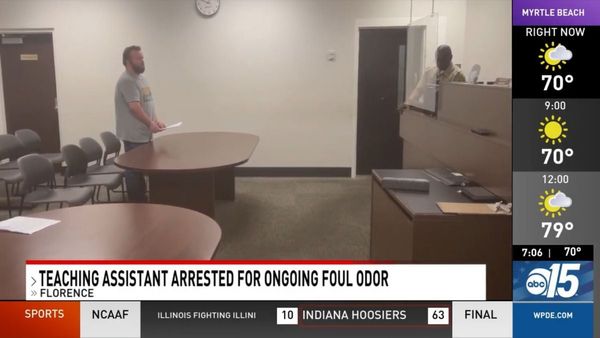Two Black men recently filed a lawsuit against Walmart for racial discrimination and false arrest, alleging that they were accused of shoplifting and subsequently detained and handcuffed in a Texas Walmart store after trying to return a defective TV. While the plaintiffs may prevail under their false arrest account, it is much more doubtful that they can win on their race discrimination claim.
As puzzling as it may seem, federal public accommodations laws do not cover retail stores. In a Supreme Court decision, justices ruled that retail stores were excluded from these laws because “there was little, if any, discrimination in the operation of them.”
To this day, based on this reasoning, courts typically refuse to interpret these laws as prohibiting discrimination in retail spaces. But are retail stores really free from racial bias and discrimination?
My new study reveals that, at least in the context of product returns, the answer is a resounding no. Retail stores are still dominant sites of race discrimination. For example, Black shoppers are 22% more likely to have their returns rejected, and 9% less likely to receive refunds, than are whites returning the same (unopened) products while following identical scripts.
I hired and trained 19 “testers” — Black and white undergrads (both women and men) — and sent them to return more than 200 unworn clothing items to 59 stores in Chicago. Notably, the testers were sent to the stores without the original receipts to test two distinct types of discrimination: First, whether sellers disproportionately granted concessions, above and beyond what the formal policy dictated, to white customers. Second, whether sellers disproportionately deprived Black customers of their contractual rights, for example, by refusing to offer them store credit or exchange .
Both types of discrimination are prevalent in the Chicago retail market. Black customers were 25% to 30% (depending on the negotiation stage) more likely to be deprived of their contractual rights, and 25% to 42% less likely to receive concessions, than were comparable whites. Among those who did not receive refunds and therefore requested to speak with the store’s manager, whites were almost 30% more likely to see a manager than were Blacks.
Black women were significantly less likely to speak with a manager than any other group — Black men, white women and white men. Remarkably, even among those who got to see a manager, white customers were 14% more likely to be granted concessions than were similarly situated Black customers, and Black women were least likely to be granted concessions.
Although the observed racial disparities are large and profoundly disturbing, they would probably not shock most Black Americans. For more than two decades, Gallup has surveyed Black people about the places where they had experienced discrimination. In the most recent Gallup poll, as many as 35% of Blacks reported having recently experienced mistreatment while shopping — more than in any other situation, including police encounters. Blacks’ experiences of mistreatment while shopping are so common that there is even a term for it: “Shopping while Black.”
Why do sellers discriminate against Black customers? Legal economists typically distinguish between two types of explanations: taste-based and statistical. Taste-based theories assume that a particular group is treated worse because it is disliked or hated, while statistical theories assume that decision-makers with limited information may draw inferences based on a person’s group affiliation.
My findings reveal that clerks and managers of both races similarly provided more favorable treatment to whites than they did Blacks. This suggests that in-group bias — people’s tendency to be more helpful toward members of their own group — is not the only explanation for racial discrimination. Indeed, evidence suggests that disparities in treatment may be driven, at least in part, by store clerks’ inferences about customers’ criminality, buying power and tendency to complain, based on their race (and gender).
For example, researchers found that people tend to believe that the typical shoplifter is a Black male, even though the data consistently shows that Blacks are no more likely to shoplift than whites.
Whatever the reasons underlying retail race discrimination, it is crucial to curtail it.
In addition to being socially harmful, retail race discrimination may also be economically inefficient. Black consumers’ spending power exceeds $835 billion. By treating Blacks as second-rate clients, retail companies might be making a multibillion-dollar mistake.
Until retail discrimination is adequately addressed by anti-discrimination laws (federal or state), I propose that regulators consider using existing consumer protection regulations to fight it. More specifically, regulators could use their authority to curtail “unfair” practices under existing unfair, deceptive, or abusive acts and practices laws.
Prohibiting and sanctioning retail discrimination in this manner could provide an effective response to the social harms that retail race discrimination continues to generate.
____
ABOUT THE WRITER
Meirav Furth-Matzkin is an assistant professor of law at the University of California at Los Angeles School of Law.







